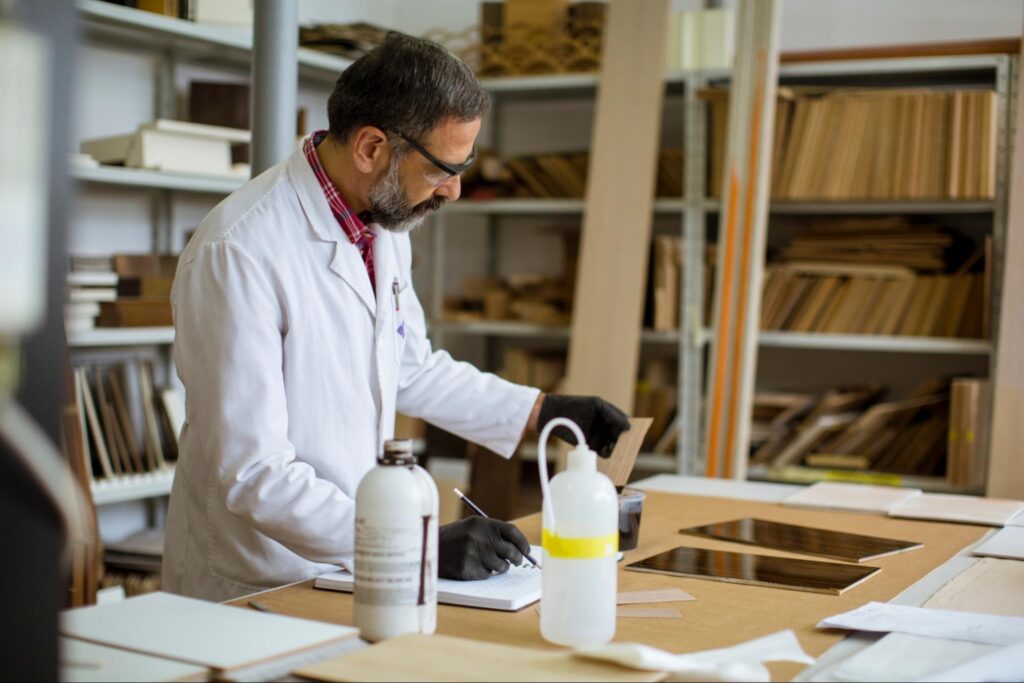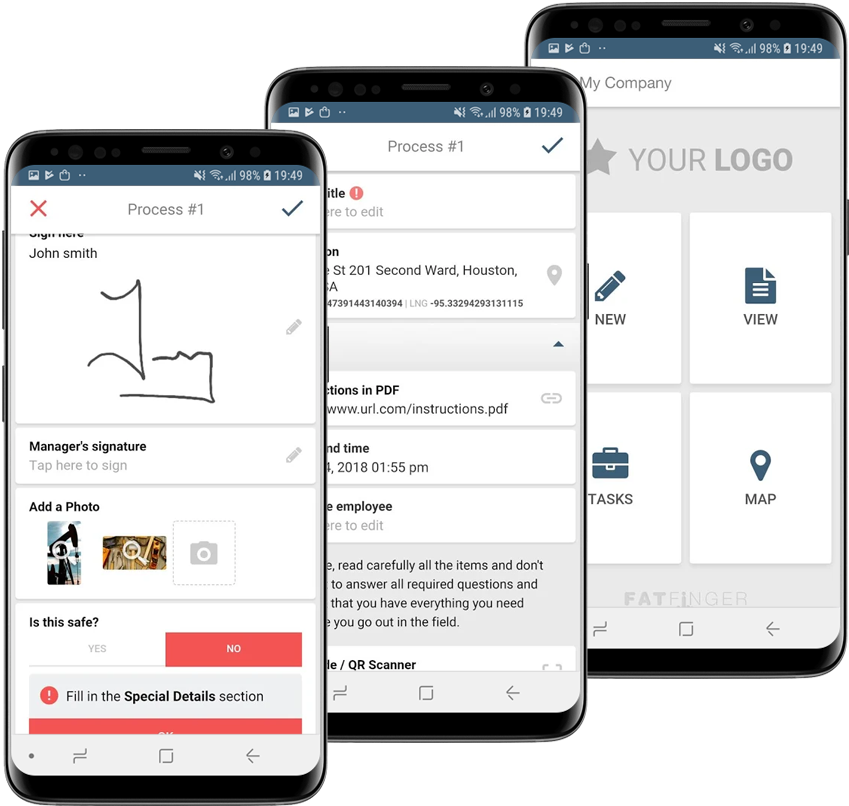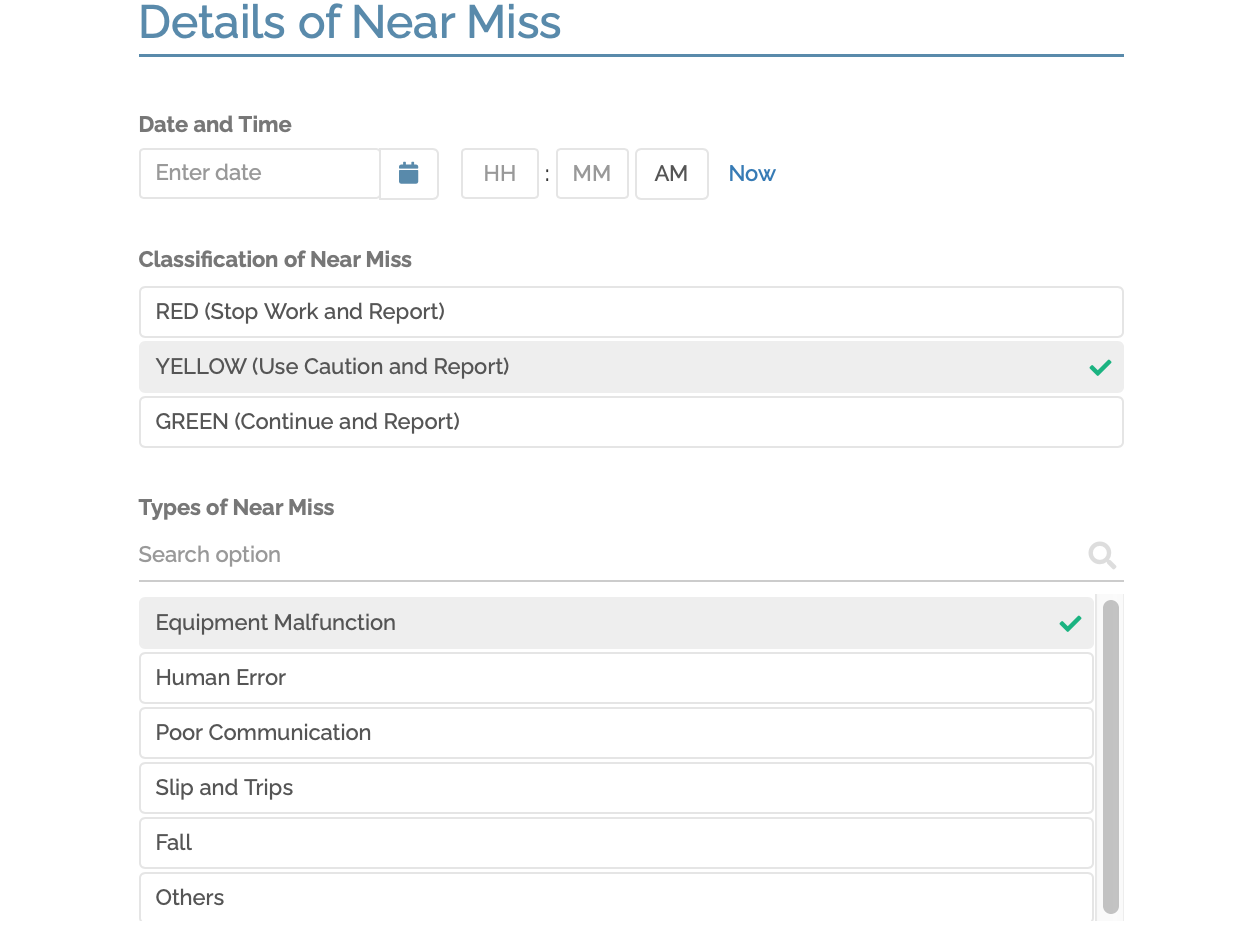Every day, workers in industrial sectors face near-miss hazards that could lead to serious accidents. However, many of these close calls go unreported. This is due in part to the fact that employees often do not know how to report near misses properly, or are afraid of being penalized for doing so.
This blog is dedicated to helping industrial sectors create an effective near miss reporting system, and encouraging employees to come forward with information about close calls in the workplace.
Table of Contents:
I. What is a Near Miss and Its Importance?
II. Top 4 Reasons Why Near Misses are Not Reported
III. Top Near Miss Reporting Examples in the Industrial Sector
IV. How to Report Near Misses?
V. What is a Near Miss Reporting System?
VI. Report Near Misses with FAT FINGER
What is a Near Miss and Its Importance
A near miss is an event that could have resulted in injury, damage, or fatalities but fortunately did not.
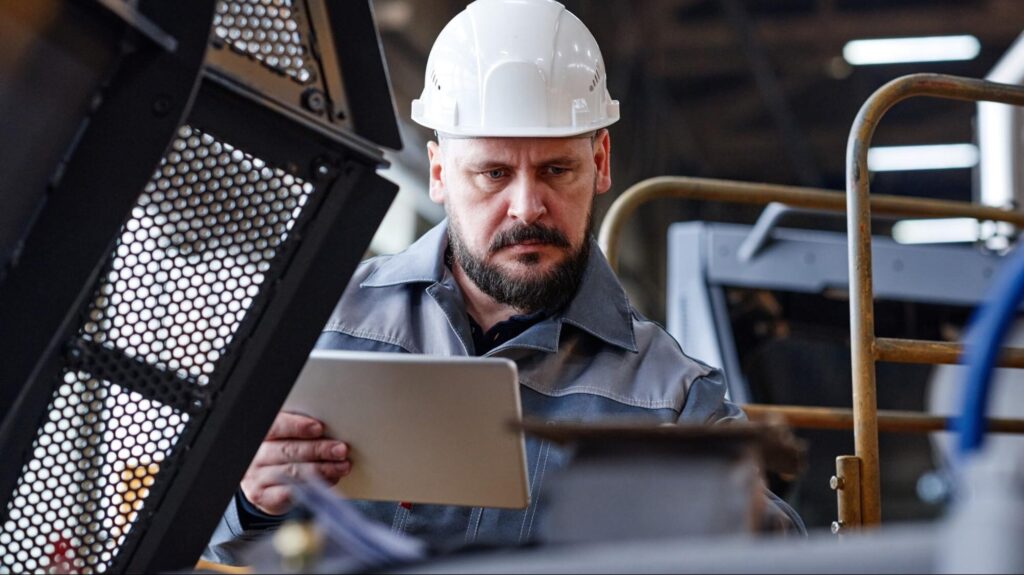
While near misses may not seem as serious as actual accidents, they can be just as essential to prevent. In the industrial sector, near misses are often caused by human error, equipment failure, or environmental conditions.By reporting near misses, companies can identify potential hazards and take steps to mitigate them. This can help to prevent future accidents from occurring. Near-miss reporting also allows companies to track trends and identify areas where safety improvements are needed.
Near-miss reporting systems can help to reduce costs. By preventing accidents from happening, companies can save money on insurance premiums and other expenses associated with accidents.Near-miss reporting systems offer several benefits for companies and employees alike. As a result, near-miss reporting is essential to keeping workers safe in the workplace.
Top 4 Reasons Near Misses are Not Reported
- Complacency. After a time, workers become used to their environment and are willing to settle for a less-than-ideal situation because they believe it’s easier than fixing the issue. To improve the reporting of near misses, it is vital to move away from complacency with paper-based checklists and towards a digital solution.
- Complicated process. If the process for reporting a near miss is complex, workers will likely hesitate to take the time out of their day to do so. A paper-based near-miss reporting system is one example.
- Don’t want work interruptions. All employees have deadlines and/or quotas they are required to meet. When workers report a near miss, it means stopping work to fill out a report, which can take several hours using a paper-based checklist.
Top Near Miss Reporting Examples in the Industrial Sector
1. Near miss due to equipment malfunctions.
Near misses can occur due to various factors, such as equipment malfunctions, human error, and poor communication. One of the most common near misses in the industrial sector is when equipment malfunctions and causes a safety hazard. For example, a machine might start up unexpectedly, or a piece of equipment may become overloaded.
Equipment Operation and Maintenance Near Miss Examples
– An accident might happen when a piece of equipment that has not been adequately maintained comes into contact with another item or person.
– A worker is only a few inches from being injured by a machine that wasn’t adequately lubricated.
– A worker near misses being injured by a machine that was not properly cleaned
Don’t want to be caught in the middle of a safety accident as a result of near misses? FAT FINGER helps prevent that by capturing and standardizing knowledge, automating and scheduling work, and identifying key areas to improve.
2. Near miss due to human error.
Human error is another common cause of near misses in the industrial sector. For example, an employee might fail to follow proper safety procedures or be unaware of a potential hazard. Human error can sometimes lead to more severe accidents, such as fires or chemical spills.
Risky Behavior Near Miss Examples
– A worker was smoking near a gas tank and started a fire.
– A worker was using a blowtorch near flammable liquids.
– A worker was operating a machine without wearing proper safety equipment.
It’s hard to keep track of everything when working in a fast-paced industrial setting. In a busy industrial environment, it’s easy for things to fall through the cracks. Employees might not be aware of all the safety procedures or forget to follow them. FAT FINGER is the solution. Our workflow app helps to automate and standardize work processes, so that employees are always aware of the proper safety procedures. Plus, our machine learning algorithms help identify critical areas where improvements can be made.
3. Near miss due to poor communication.
Poor communication can also lead to near misses in the industrial sector. For example, an employee might not be adequately trained on how to use a piece of equipment or might not be unaware of a potential hazard.
Hazard Communication Near Miss Examples
– A worker near misses being injured by a piece of equipment that was not labeled properly
-A chemical is dangerously close to injuring a worker who was not warned about its dangers.
– A worker is nearly injured by hazardous material that was not stored appropriately.
A lack of communication can cause many problems in an industrial setting. FAT FINGER is a safety management tool that helps prevent these types of mistakes. By capturing and standardizing knowledge and identifying key areas to improve, FAT FINGER helps keep your business running safely and smoothly.
4. Near miss due to slip and trips.
Slips and trips are common causes of near misses in the industrial sector. For example, a worker might slip on a piece of oil or water on the floor or trip over something left lying on the ground. These accidents can often be prevented by implementing proper safety procedures and creating a safe work environment.
Slip and Trips Near miss examples:
– A worker near misses tripping on a cord that was left across the walkway.
– A worker near misses slipping on an oil spill on the factory floor.
– A worker near misses tripping on a tool that was left on the floor.
Implementing proper safety procedures is essential, but it’s often difficult to keep track of all the necessary steps. And even if you do have a good grasp on safety protocols, there’s still the challenge of making sure everyone follows them. FAT FINGER is the solution to your slips and trips near missed.
FAT FINGER captures incidents and identifies key areas to improve. That means you can focus on what you’re good at – running your business – while we take care of making sure your workers stay safe.
5. Near miss due to fall.
Slips and trips are another common types of near miss in the industrial sector. These accidents can occur when employees fail to properly clean up spills, or when they walk on slippery surfaces.
Fall Risks Near Miss Examples:
– A worker who was carrying a heavy load slipped on the stairs and fell.
– A worker was changing a light bulb on a high ladder when he lost his balance and fell.
– A worker was cleaning the windows on the third floor of a building when she lost her balance and fell.
These accidents can be costly and dangerous for employees. They can also lead to a loss of productivity if workers are injured and have to take time off to recover. FAT FINGER is the solution to preventing these types of accidents from happening. By capturing knowledge and automating workflows, you can ensure that everyone knows potential hazards and how to navigate the workplace safely.
By following these near-miss reporting examples, you can help create a culture of safety in your workplace and prevent severe accidents from happening.
How to Report Near Misses?
In the industrial sector, near misses are taken very seriously, as they can provide valuable information about potential hazards. As a result, many businesses have formal procedures for near-miss reporting.
However, there are a few steps you can take to ensure that all near misses are appropriately documented.
1.Record the date, time, and location of the near miss.
2.Record the names of all employees involved in the near miss.
3.Describe the event in detail, including what happened, who was affected, and what could have gone wrong.
4.Take photographs or video footage of the near miss if possible.
5.Collect any evidence related to the near miss (e.g., safety reports, eyewitness statements, etc.).
6.Submit a report to your supervisor or safety committee as soon as possible.
It is important to remember that near misses should not be reported anonymously. All near misses should be documented appropriately and include the names of all employees involved. Here are some of the best practices in near miss reporting.
What is a Near Miss Reporting System?
A near-miss reporting system is a process used in the industrial sector to track and record incidents that could have resulted in severe injury or damage but didn’t. By cataloging near misses, companies can take steps to prevent similar accidents from happening in the future.
Near-miss reporting systems vary from company to company, but they typically involve employees filling out a report whenever an incident occurs. Safety personnel then review these reports, who can decide whether further action needs to be taken. In some cases, near misses may be Investigations by themselves; in others, they may be part of a larger investigation into a more severe accident.
There are two ways to report near misses: manually or digitally.There are several key differences between manual and digital near-miss reporting. Manual near miss reporting typically involves filling out a paper form, which is then reviewed by safety personnel.Digital near miss reporting, on the other hand, can be done online or through a mobile app.
Near-miss reporting can help to raise awareness of potential hazards among employees, making them more likely to take precautions in the future. Read more about near-miss reporting forms here.
This makes it easier for employees to report near misses quickly and accurately. Digital reporting systems also allow companies to track trends and identify hazards more quickly. As a result, digital near-miss reporting can be a valuable tool for keeping workers safe in the workplace.
Implementing a near-miss reporting system with FAT FINGER can help your company improve workplace safety and avoid accidents. FAT FINGER makes near-miss reporting more accessible and faster for employees, allowing companies to track near misses and identify hazards quickly. Applying the mobile technology of FAT FINGER to various oil and gas industries, manufacturing sectors, and other business services enables instant conversion of existing paper and computer-based forms into a single, field-ready mobile application. Benefits include a real-time dashboard, one source of information, eliminating administrative overhead, hassle-free reporting, and simplified compliance. To experience these benefits, sign up for a trial today and maximize the use of our existing Workflow template regarding near-miss reporting.
Report Near Misses with FAT FINGER
Many employees fail to report near misses because they don’t want to get in trouble or think it’s not a big deal. As a result, near misses often go unnoticed until it’s too late.
So how can you encourage employees to report near misses? One way is to create a near-miss reporting system that is easy to use and accessible to all employees.
This is one of FAT FINGER‘s core benefits.
With FAT FINGER, there’s no more need to fill out a safety observation form back at the computer while on fieldwork since all forms are included in mobile-based software. Everyone can submit from the scene instantly, whether you’re inside the production room, near the oil rig construction, or just at the warehouse.
Additionally, it would be best if you made it clear that near misses should be treated seriously and that there will be no repercussions for reporting them. Finally, you should encourage employees to speak up if they see something unsafe happening, even if it doesn’t result in a near miss. By taking these steps, you can help create a culture of safety in your workplace and prevent severe accidents from happening.
Are you looking for a way to improve workplace safety?
FAT FINGER is the perfect solution. Our near miss reporting system makes it easier and faster for employees to report accidents and identify hazards. This allows companies to track near misses more easily and improve safety in the workplace.
You can experience all of these benefits and more by signing up for a free trial today. With FAT FINGER, you’ll have one source of information, a real-time dashboard, hassle-free reporting, and simplified compliance. So why wait? Sign up now!
About FAT FINGER
Ensure front-line teams do their work correctly every time. Drag & drop digital procedures that unlock operational excellence.
In seconds anyone can build and deploy enterprise-grade mobile applications using an easy drag-and-drop no-code builder.
FAT FINGER uses machine learning to coach app users in real-time to make safer and improved decisions.
Try building your digital procedure on FAT FINGER for free @ www.fatfinger.io
Near-miss reporting for everyone – Anytime and anywhere.
We empower EVERYONE to initiate and create positive change to improve the company’s safety records no matter where you are. The only way to keep up with the speed at which the world moves today is to empower everyone from the front-line worker to the executive.
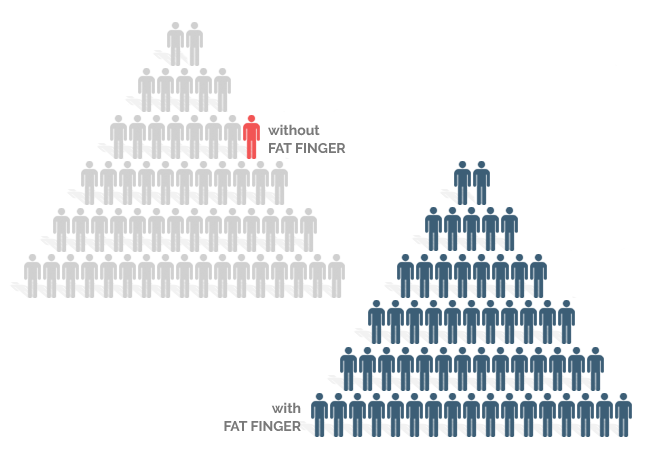
Data powerhouse – Keeping everything in one place.
Data are stored in the cloud and available in real-time to everyone who needs it. All your up-to-date safety work instructions and training content are available across any device as employees perform the work.

Advanced Analytics- What gets measured, gets managed.
Every single piece of information captured by FAT FINGER users will feed your company analytics in real time. FAT FINGER provides you with valuable insights to help improve your workplace safety. With detailed dashboards, you can quickly identify areas of improvement and track your progress over time.







